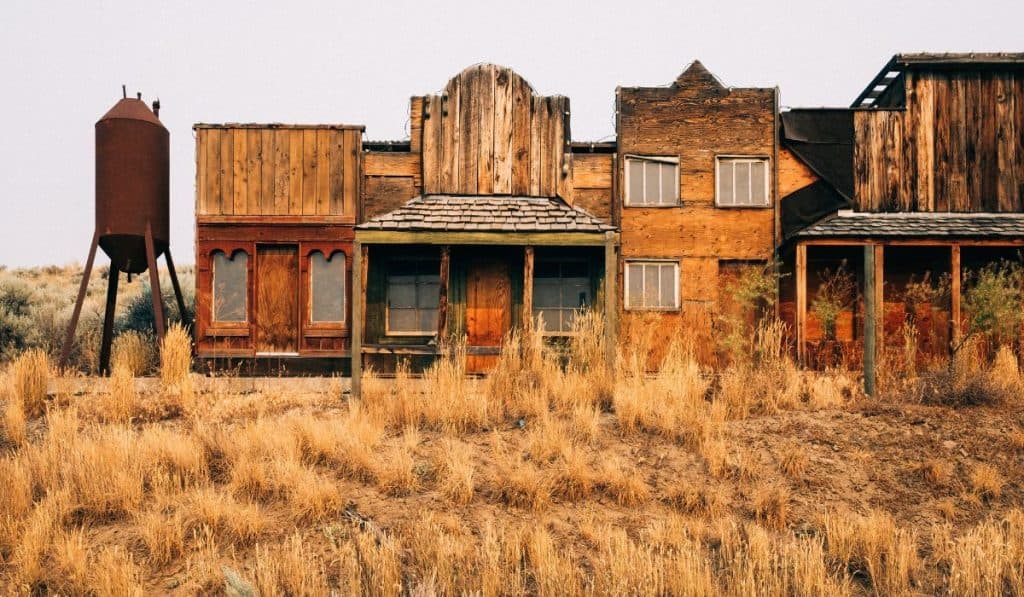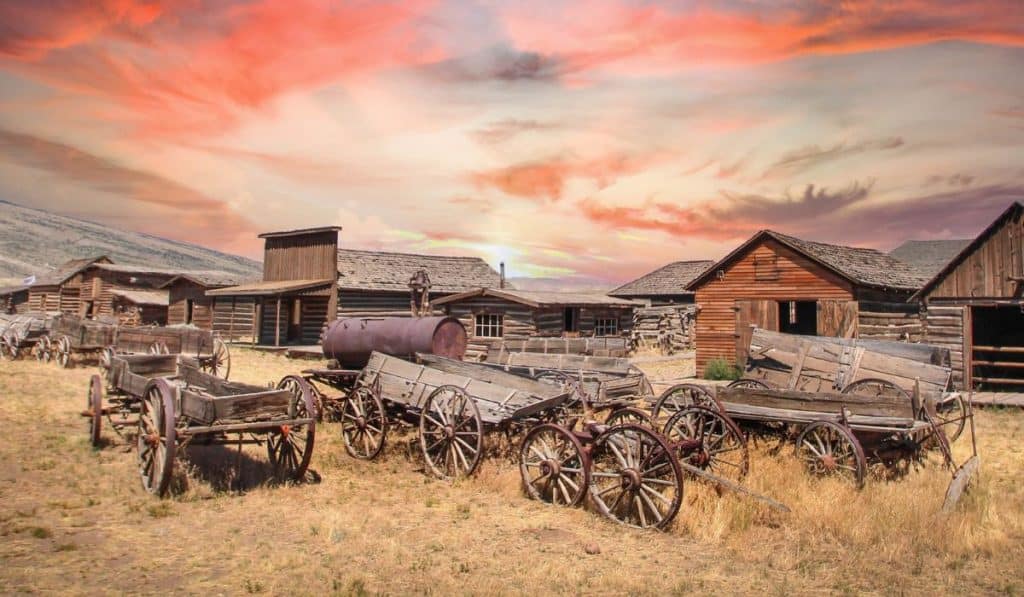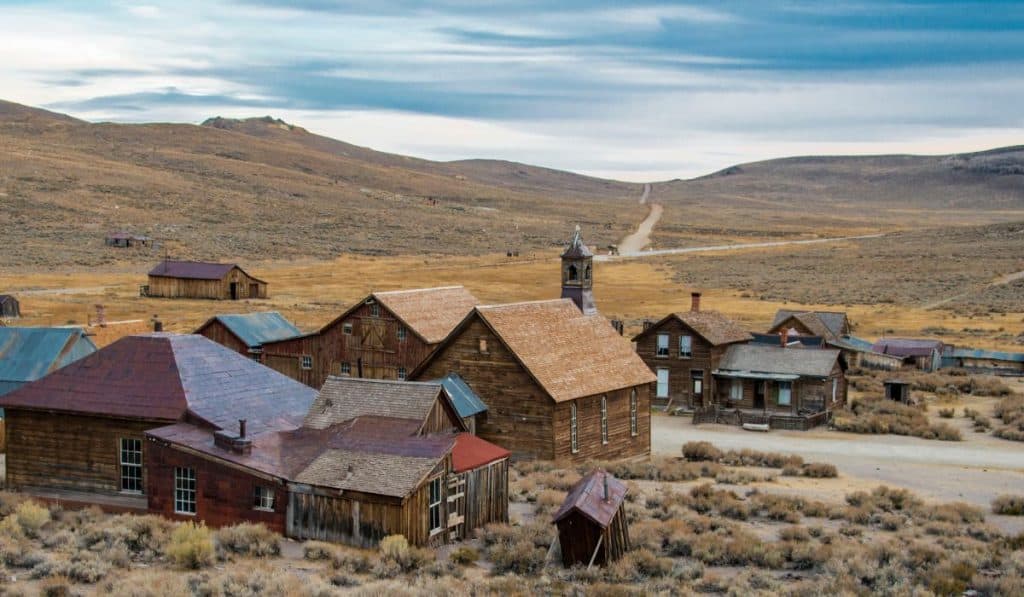A ghost town can be a misleading name. People will either refer to a ghost town as an abandoned town or they will quite literally mean that the town is filled with spirits and is haunted. The two meanings can however go hand in hand when it comes to describing how ghost towns happen.
A ghost town usually occurs when a town becomes abandoned. This means it retains all or most of its infrastructure (buildings, roads, utilities) but doesn’t have any inhabitants. The reason for this is often because of an economic downturn or natural disaster that forces the inhabitants to move to a new town or city.
Usually, the very existence of an abandoned or “ghost” town will lead to tales of it actually being haunted. Many popular ghost hunting destinations are simply abandoned towns that carry interesting stories about the presence of ghosts being the main reason people refuse to live there anymore.
For the purpose of this article, we’ll cover what makes a ghost town and how a town can suddenly go from having a thriving community to becoming abandoned and receiving the label of a ghost town.
Read all about the best ghost towns in California here!
Do Ghost Towns Really Exist
If you’re surprised to hear that ghost towns really do exist, you might be even more surprised to find that in America alone, there are over 3,800 recognized ghost towns spanning multiple states.
Many of these towns were once bustling and thriving communities with up to (and in excess of) 10,000 inhabitants in the surrounding area. In a world where resources are finite and the ownership of land is a much sought-after commodity, 3,800 abandoned towns in America alone is a staggering statistic.
This, therefore, raises the interesting question of how ghost towns suddenly, or gradually, come about.

How Do Ghost Towns Happen
There are a number of reasons why towns become abandoned and overtime, then become ghost towns. While a ghost town is usually considered to be an area with buildings, infrastructure, and no inhabitants, you can get ghost towns with a small population.
A population of 10 – 30 will still see some towns be classed as a ghost town as a result of their previous residency which would have been in the thousands. The main factor that influences a ghost town is therefore one where the population eventually reduced in size close to zero.
The two main reasons for this are either economic crashes/downturns or the result of a natural disaster. Both of these factors have a significant influence on towns becoming abandoned so we’ll discuss each one in more detail separately.
1) Economic Downturn
The most typical reason for ghost towns happening (especially in America) is usually the result of an economic downturn. To expand on this, many towns and particularly those in Western states were initially built by large corporations.
The reason for this is that they were building these towns in commodity areas that were discovered to have natural resources that could be sold for a higher price. This includes oil, coal, gold, silver, and copper.
Most people will be familiar with the gold rush and the discovery of these resources would lead to towns being built around mines. Communities were built around these mines or “plants” as the corporations built the infrastructure and then rented houses to the workers and families.
In most of these cases, you’ll find that the company owned the buildings and land so when the resources dried up, they moved elsewhere. This led to jobs being lost and a chain reaction that resulted in almost all families moving out of the town in search of economic sustainability.
This might be hard to imagine considering we live in the digital age and remote work is a possibility but in pre-1950’s, a lot of towns were built around these resources and they acted as their own economy leading to saloons, stores, and other businesses opening up in the town.
Agriculture is another example that can be hit hard by droughts or floods (covered shortly) which would again lead to these towns becoming abandoned. The towns that either mined resources or acted as transport hubs were those hit the hardest and many ghost towns listed on the market today were former mining towns.
Therefore, economic downturns were one of the leading causes for a once thriving town suddenly becoming deserted and claiming the title of a ghost town. People simply could not afford to live in these towns anymore!

2) Natural Disaster
You’ll find that in certain areas, natural disasters are much more frequent occurrences and this has become more apparent with a focus on climate change in recent years. Floods, tornados, earthquakes, and even draughts are all very common causes for towns becoming desolate.
Many areas that were hit by a natural disaster between the 1800s-1950s simply did not have the ability to rebuild their town and society from scratch. Structures that were left ruined by a natural disaster meant that families and communities needed to travel to nearby towns or cities in order to rehome.
In these instances, most of the original structures were damaged and these towns therefore only have a few structures remaining which is why they are of no real appeal to potential buyers.
Ghost towns hit by a natural disaster offer less of an appeal for tourists, ghost hunters, or potential buyers for this reason and are usually less interesting than the larger towns that are abandoned for economic reasons whereby they could still easily have been habitable.
Just to make a note on the two points above, these are not the only reasons why ghost towns happen. It can also come about as a result of uncontrolled lawlessness in an area (less common now), government-imposed regulations, an infrastructure that doesn’t suit modern lifestyles, or pollution.
Read about the best Ghost towns in the USA here!
What Is the Biggest Ghost Town in America
Now that we’ve covered some of the top reasons why towns become ghost towns, you might be wondering what the typical size of some of these towns is?
In China, for example, whole cities are abandoned after initial investment went into China in anticipation of an economic boom but it was done to a significantly overestimated quantity leaving entire cities eerily empty.
In America, most of the towns were built up based on the population at the time rather than in anticipation of future activity but there are still some towns that are large in size and definitely have an eerie feeling of abandonment to them.

Bodie, California, is a real flashback to the Wild West and is thought to be the largest ghost town in America to this day. As a boomtown for gold in 1876 – 1879, this town had a population of around 7,000 – 10,000 people.
Bodie is now established as a National Historic Landmark and is a trendy tourist destination but what’s most interesting in our opinion is how a town could go from such a large occupancy to a ghost town so easily in the early 20th century.
While there are a few other ghost towns that boasted a population of 1,000+, many you come across will not be in a similar condition today. The majority of ghost towns in America are on the smaller side with a few structures in terms of houses, stores, chapels, museums, and other buildings providing a tourist spot or potential investment opportunity.
What State Has the Most Ghost Towns
As mentioned earlier, unlawfulness in the West combined with mining opportunities means that most ghost towns can be found in these states. Texas is documented by Geotab as being the state with the most ghost towns at a lofty 511 in total!
California is another state that has a large number of ghost towns as well and the below is an interesting YouTube video shot by a small group exploring a large ghost town in California (though they omit the name of the specific town to prevent people from actively seeking it out).
In Summary
With 3,800 recognized ghost towns in America alone, it’s hardly surprising that people wonder how these towns come to be abandoned. Unfortunately, most of the reasons are not too exciting for those seeking a good story and the vast majority are the result of ceased economic activity or natural disasters in the late 19th and early 20th centuries.
While some of these towns do become interesting ghost hunting spots that are said to be haunted (another reason for the name) you’ll also find ghost towns that are still inhabitable and available for purchase, some are national landmarks, some relics, and some have even been turned into luxury tourist destinations.




